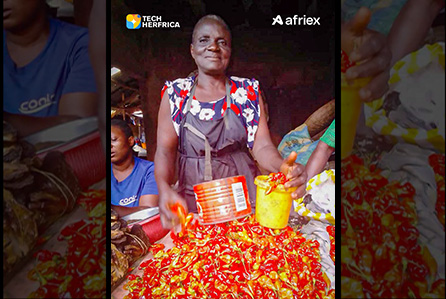A growing trend in recent years has been the consumption of fresh, locally sourced food. People are becoming more knowle...
Preserving the Freshness: Essential Food Preservation Methods to Prevent Food Wastage In Africa
Introduction
Food wastage is a significant global issue that has both environmental and socio-economic implications. According to the Food and Agriculture Organization (FAO), approximately one-third of all food produced for human consumption is wasted. Addressing this problem requires a multi-faceted approach, and one effective strategy is to improve our food observation techniques. By being more mindful of our food habits and adopting proactive measures, we can significantly reduce food wastage.
African cuisine boasts of a rich tapestry of flavours, ingredients, and vibrant dishes. From succulent stews to exotic fruits, the continent offers a diverse range of fresh foods that captivate the palate. To ensure the availability of these culinary delights beyond their peak seasons and prevent waste, it becomes crucial to employ effective food preservation techniques. In this article, we will explore various general food preservation methods specifically tailored to the preservation of fresh African food.

1. Canning:
Canning is a reliable preservation method that involves sealing food in airtight containers and subjecting them to heat, effectively destroying microorganisms and enzymes. For food, such as chutney, pickled vegetables, and jam, canning is an excellent option. It not only extends their shelf life but also locks in the unique flavours and aromas of the ingredients.
2. Drying:
Drying is an ancient preservation method widely used in African culinary traditions. Sun drying, air drying, or using dehydrators are effective techniques to remove moisture from food, inhibiting the growth of bacteria and mould. Foods like fruits, vegetables, herbs, and fish can be dried and stored for extended periods. Dried ingredients like okra, baobab fruit, and dried fish are staples in many African recipes and add depth to dishes long after their season.
3. Fermentation:
Fermentation is a traditional preservation method practised across Africa, harnessing the power of beneficial bacteria to preserve food. Foods like kimchi, sauerkraut, and injera are all products of fermentation. In African cuisine, fermentation is commonly used to preserve vegetables, grains, and even dairy products. Fermented foods provide health benefits through the production of probiotics while enhancing the flavours and textures of the ingredients.
4. Freezing:
Freezing is a versatile preservation technique that works well for a wide range of African foods. By lowering the temperature, freezing slows down enzymatic reactions, preventing spoilage. It is particularly useful for preserving fresh fruits, vegetables, meat, and fish. However, it is important to properly prepare and package the food to prevent freezer burn and maintain the quality and nutritional value of the ingredients.
5. Smoking:
Smoking is a preservation method that adds distinctive flavors to African cuisine while extending the shelf life of meats and fish. Cold smoking and hot smoking are two techniques commonly used. Cold smoking involves exposing food to smoke without heat, while hot smoking incorporates both smoke and heat to cook the food. Traditional dishes like smoked fish, biltong, and jerky are popular examples of smoked African foods.
6. Pickling:
Pickling involves preserving food in an acidic solution such as vinegar or brine, creating an inhospitable environment for bacteria. This method is ideal for preserving fruits, vegetables, and roots. In African cuisine, pickled ingredients like mangoes, cucumbers, and onions are often used as condiments or to add tangy flavors to various dishes. The acidity in pickled foods also aids in digestion.
Conclusion
Preserving fresh African food is crucial to ensure its availability throughout the year and reduce food waste. By utilizing various preservation methods such as canning, drying, fermentation, freezing, smoking, and pickling, the unique flavors, textures, and nutritional values of African ingredients can be preserved for extended periods. These methods not only enable the exploration of diverse culinary traditions but also contribute to sustainable food practices. So, embrace the art of preservation and savor the vibrant flavors of African cuisine all year round.By adopting these general food observation techniques, individuals can actively contribute to the curb of food wastage in Africa. By being mindful of foods and the proper method of preserving different foods, we can collectively work towards a more sustainable and efficient food system while reducing the global issue of food wastage.

